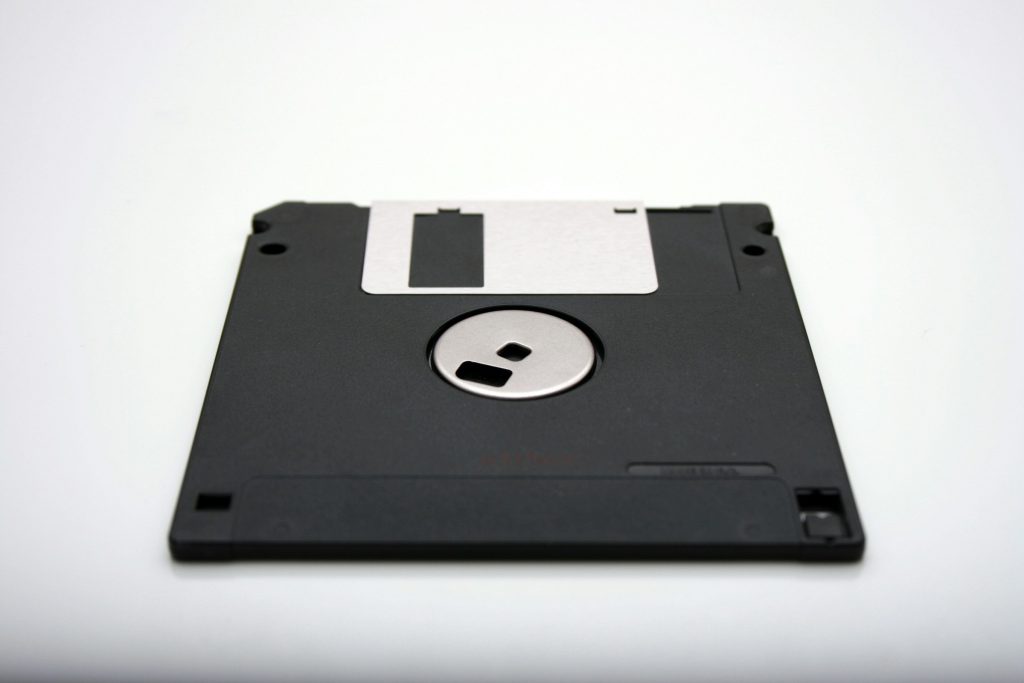The Dawn of Digital Storage: Floppy Disks
The story begins in the early 1970s with the advent of the floppy disk, a revolutionary storage medium at the time. Developed by IBM, the first floppy disks were 8 inches in diameter and could hold a mere 80 kilobytes of data. Despite their limited capacity, floppy disks marked a significant departure from earlier methods of data storage, such as punched cards and magnetic tape.
By the late 1970s, the 5.25-inch floppy disk became popular with personal computers, offering 110 kilobytes of storage. This size was quickly superseded by the 3.5-inch floppy disk in the 1980s, which boasted a more compact design and an increased storage capacity of 1.44 megabytes. The 3.5-inch disk became a ubiquitous data storage medium throughout the 1990s, prized for its portability and ease of use.
However, the limitations of floppy disks became apparent as software and data sizes grew. Their relatively small capacity and vulnerability to physical damage, such as bending and exposure to magnetic fields, led to the search for more robust storage solutions.
The Rise of Optical Discs
The 1990s ushered in a new era with the introduction of optical discs, such as compact discs (CDs) and digital versatile discs (DVDs). CDs, initially developed for audio storage, quickly found a new application in data storage, offering a capacity of around 700 megabytes. DVDs followed, providing up to 4.7 gigabytes of storage on a single layer, which was a significant leap forward.
The advantages of optical discs included higher storage capacity and durability compared to floppy disks. They were less susceptible to physical damage and did not suffer from the same limitations in terms of data degradation. Optical discs also facilitated the mass distribution of software and media, transforming how consumers accessed digital content.
Despite these advancements, optical discs had their own limitations. The read/write speeds were relatively slow compared to emerging technologies, and the physical size of the discs, while compact, still required dedicated drives.
The Advent of Hard Disk Drives
As data storage needs continued to grow, the hard disk drive (HDD) emerged as a key player in the late 20th century. Unlike floppy and optical discs, HDDs use magnetic storage to record data on rotating platters. The technology enabled much higher storage capacities, starting with early drives that offered only a few megabytes, but quickly advancing to hundreds of gigabytes and eventually terabytes.
HDDs became the standard for both personal and enterprise computing, offering significant improvements in data access speeds and storage density. The ability to store large volumes of data on a single device revolutionized industries ranging from software development to media production.
However, HDDs are not without their drawbacks. The mechanical nature of HDDs makes them prone to physical wear and tear, leading to potential reliability issues over time. The moving parts also contribute to slower data access speeds compared to newer technologies.
The Emergence of Solid-State Drives
The 2000s brought the advent of solid-state drives (SSDs), a game-changer in data storage technology. Unlike HDDs, SSDs use NAND flash memory to store data, which eliminates the need for moving parts. This fundamental difference provides several key advantages: faster data access speeds, greater durability, and lower power consumption.
SSDs have drastically improved boot times, application load times, and overall system responsiveness. This speed improvement is particularly noticeable in tasks that require rapid data access, such as gaming, video editing, and database management.
One of the most significant advantages of SSDs is their durability. With no moving parts, SSDs are less susceptible to physical shock and damage, making them ideal for mobile devices and laptops. Additionally, the lack of mechanical wear means that SSDs generally offer longer lifespans compared to HDDs.
Despite these benefits, SSDs have traditionally been more expensive per gigabyte than HDDs. However, as technology has progressed and manufacturing costs have decreased, SSD prices have dropped significantly, making them more accessible to consumers and businesses alike.
The Future of Data Storage
Looking ahead, the future of data storage technology promises even more exciting developments. Emerging technologies such as 3D NAND, which stacks memory cells vertically to increase storage density, and quantum storage, which leverages quantum states to store data, are on the horizon. These innovations aim to address the ever-growing demand for faster, more efficient, and more reliable data storage solutions.
Additionally, advances in data storage are increasingly focusing on integration with other technologies. For instance, the rise of cloud computing has shifted the focus from individual storage devices to large-scale, distributed storage systems that leverage both HDDs and SSDs to provide scalable and accessible data storage solutions.
Conclusion
The evolution of data storage from floppy disks to solid-state drives illustrates a remarkable journey of technological advancement. Each stage of this evolution has been driven by the need for greater capacity, faster access speeds, and improved reliability. Floppy disks paved the way for more portable and user-friendly storage solutions, while optical discs and hard disk drives addressed the growing demands for larger storage capacities and more robust performance.
The advent of solid-state drives represents a significant leap forward, offering unprecedented speed, durability, and efficiency. As we look to the future, ongoing innovations promise to further transform how we store and access data, potentially redefining the landscape of digital storage once again.
Understanding this evolution not only highlights the progress made in technology but also provides insight into the broader trends shaping the digital age. From early magnetic storage to cutting-edge flash memory, the journey of data storage is a testament to human ingenuity and the relentless pursuit of technological advancement.

